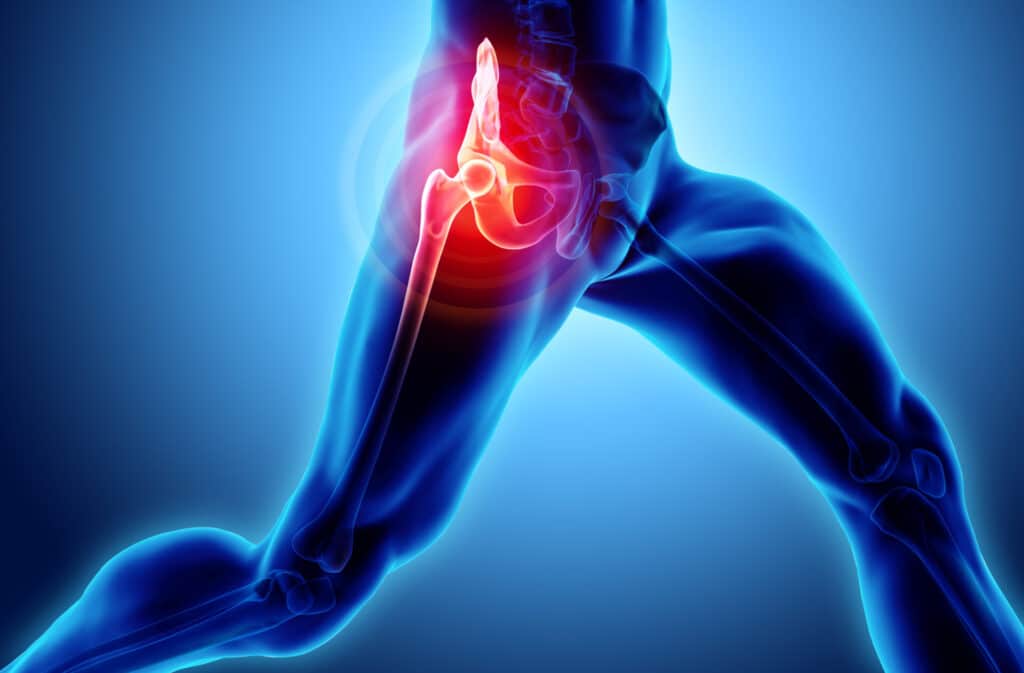
More Senior Health Articles
Comparing Hip Replacement Techniques: What Patients Should Know

Hip replacement surgery, also known as hip arthroplasty, is a standard procedure to relieve pain and improve mobility in patients suffering from hip joint damage or degeneration. As medical technology advances, various techniques have emerged for performing hip replacements, each with advantages and considerations. For patients expecting to receive this procedure, understanding the differences between the various techniques is crucial for making informed decisions.
In this article, we’ll explore the key aspects of different hip replacement techniques, including traditional hip replacement, minimally invasive hip replacement, and robotic-assisted hip replacement. By comparing these approaches, patients can gain insight into the potential benefits, risks, and outcomes of each method.
For more information on hip replacement techniques and treatment options, please consult a qualified orthopedic surgeon or visit reputable service providers, such as Aaronaltenburgmd.com.
Traditional Hip Replacement
Traditional hip replacement surgery has been the gold standard for decades. It involves a larger incision and more extensive tissue dissection than newer techniques. During this procedure, the surgeon removes damaged bone and cartilage from the hip joint and replaces them with prosthetic components made of metal, plastic, or ceramic materials.
One of the primary advantages of traditional hip replacement is that it allows the surgeon to directly visualize the joint, allowing for precise placement of the prosthetic components. Additionally, this approach may be preferred for patients with complex hip deformities or significant bone loss. The better visibility and flexibility of the components allow better fit, implantation, and bone grafting.
However, traditional hip replacement typically requires a more extended recovery period due to the larger incision and more extensive soft tissue trauma. Patients may experience more pain and stiffness in the early postoperative period, requiring more extended hospital stays and rehabilitation.
Minimally Invasive Hip Replacement
Minimally invasive hip replacement techniques aim to reduce surgical trauma and accelerate recovery by using smaller incisions and specialized surgical instruments. These approaches involve muscle-sparing techniques that allow the surgeon to access the hip joint with less disruption to surrounding tissues.
One common minimally invasive approach is the anterior approach, where the surgeon accesses the hip joint from the front of the hip rather than through the side or back. This technique may offer advantages such as reduced postoperative pain, shorter hospital stays, and faster recovery than traditional hip replacement.
However, minimally invasive hip replacement may not be suitable for all patients, especially those with complex hip anatomy or pre-existing muscle weakness. Additionally, some studies suggest that while minimally invasive techniques offer short-term benefits, long-term outcomes may be comparable to traditional hip replacement.

Robotic-Assisted Hip Replacement
Robotic-assisted hip replacement is a cutting-edge technology that combines the precision of robotics with the surgeon’s expertise. This approach uses preoperative imaging to create a 3D model of the patient’s hip anatomy, allowing the surgeon to plan the procedure accurately.
During surgery, the robotic system provides real-time feedback to the surgeon, assisting in precise bone cuts and implant placement. This level of accuracy may help optimize the fit and alignment of the prosthetic components, potentially improving long-term outcomes, such as implant longevity and joint function.
Robotic-assisted hip replacement holds several potential benefits for patients, such as reduced risk of complications, shorter recovery times, and improved implant survival rates. However, this technology is only widely available at some medical centers and may be associated with higher costs than traditional or minimally invasive techniques.
Recovery And Rehabilitation
After hip replacement surgery, rehabilitation is crucial in achieving optimal outcomes. Regardless of the technique used, patients can expect to undergo physical therapy to regain strength, flexibility, and range of motion in the hip joint.
In a traditional hip replacement, rehabilitation typically begins shortly after surgery and progresses gradually over several weeks. Patients may first need assistance with walking and daily activities, transitioning to independent movement as strength and mobility improve.
Minimally invasive techniques may offer a faster recovery timeline, with some patients able to return home the same day or within a few days of surgery. Physical therapy focuses on restoring hip function while minimizing strain on surrounding tissues and muscles.
Robotic-assisted hip replacement facilitates accelerated recovery by optimizing implant placement and joint mechanics. However, regardless of the technique used, patients should follow their surgeon’s recommendations for postoperative care and rehabilitation to ensure the best possible outcome.
Complications And Risks
While hip replacement surgery is generally safe and effective, it does carry risks. Complications can occur with any surgical procedure, and patients should be aware of potential adverse events associated with hip replacement.
Common complications include infection, blood clots, dislocation of the hip joint, and implant loosening or failure. Minimally invasive techniques may be associated with lower blood loss and infection risk due to smaller incisions and reduced tissue trauma. However, all surgical procedures carry some risk, and patients should discuss potential complications with their surgeon before hip replacement.
Additionally, factors such as age, overall health, and lifestyle habits may influence the risk of complications following hip replacement surgery. Patients with underlying medical conditions—such as diabetes, obesity, or cardiovascular disease—may have an increased risk of surgical complications and should be closely monitored during the recovery process.
Long-Term Outcomes
The long-term success of hip replacement surgery depends on various factors, including patient age, activity level, implant type, and surgical technique. While many patients experience significant pain relief and improved mobility following hip replacement, the longevity of the prosthetic components can vary.
Younger patients generally face a higher risk of implant wear and loosening due to increased activity levels and longer life expectancy. Conversely, older patients may experience excellent outcomes with traditional or minimally invasive hip replacement, particularly if they have lower physical demands.
Robotic-assisted hip replacement may offer potential advantages in implant longevity and joint function, although long-term studies are needed to confirm these benefits. Additionally, ongoing advancements in implant design and surgical techniques may further improve outcomes for patients undergoing hip replacement surgery in the future.
One complication that can occur is fracture. During the femoral stem insertion, the femur bone may crack or break, especially if the bone is weak from osteoporosis or avascular necrosis. The risk is reduced by careful preoperative planning and technique. Occasionally, a wire or cable may be placed around the femur for reinforcement. If a fracture does occur, it typically requires a longer hospital stay and a healing period of 6–12 weeks protected weight bearing.
Heterotopic ossification is another issue in a small percentage of hip replacement patients. This is abnormal bone growth around the replaced joint, possibly due to the trauma of surgery. It can cause decreased mobility and pain if severe. Preventative medication after surgery helps lower risks. But if substantial extra bone forms, additional surgery may be necessary to remove it and regain range of motion.
Some individuals may continue experiencing hip pain and limitations after joint replacement surgery. This occurs in approximately 5% of patients, a condition called refractory pain. Possible causes include nerve injury, component loosening, involuntary muscle tightness, or underlying low back issues projecting pain to the hip region. If all tests and scans are negative, pain management injections or revision surgery may sometimes provide relief. But managing expectations is also essential.
Determining The Best Method
Choosing the most appropriate hip replacement surgery method requires careful consideration of several factors. Patients should work closely with their orthopedic surgeon to evaluate their needs, preferences, and medical history. Here are some key factors to consider when determining which hip replacement surgery method is best for you:
- Medical Evaluation: Before recommending a specific hip replacement technique, your orthopedic surgeon will conduct a comprehensive medical evaluation to assess your overall health, hip joint condition, and any underlying medical conditions that may affect surgery or recovery. This evaluation may include physical examinations, imaging tests (such as X-rays or MRI scans), and discussions about your symptoms and treatment goals.
- Anatomical Considerations: The anatomy of your hip joint can influence the suitability of different hip replacement techniques. For example, patients with complex hip deformities or significant bone loss may benefit from traditional hip replacement surgery, which allows the surgeon greater access to the joint for precise implant placement. Conversely, patients with relatively straightforward hip anatomy may be candidates for minimally invasive or robotic-assisted techniques.
- Activity Level And Lifestyle: Your activity level and lifestyle preferences can also inform the choice of hip replacement surgery method. Suppose you lead an active lifestyle or participate in high-impact activities, such as running or competitive sports. In that case, you may require a more durable implant and a technique that can withstand increased stress on the joint. Your surgeon can help you understand how different techniques may affect your ability to return to activities you enjoy after surgery.
- Recovery Expectations: Consider your expectations for the recovery process, including the length of hospital stay, postoperative pain, and rehabilitation requirements. Minimally invasive techniques are often associated with shorter hospital stays and faster recovery times than traditional hip replacement, which may appeal to patients who prioritize a quicker return to daily activities. However, it’s essential to balance these potential benefits with the need for optimal surgical outcomes and long-term joint function.
- Surgeon Experience: The experience and expertise of your orthopedic surgeon play a significant role in the success of hip replacement surgery. Be sure to choose a surgeon with extensive experience performing the specific technique you are considering and who can provide evidence-based recommendations tailored to your needs. Ask about your surgeon’s complication rates, patient outcomes, and familiarity with the latest advancements in hip replacement technology.
- Cost And Insurance Coverage: Consider the financial aspects of hip replacement surgery, including the cost of the procedure, associated medical expenses, and insurance coverage. While minimally invasive and robotic-assisted techniques may offer potential benefits in terms of shorter hospital stays and reduced rehabilitation costs, they may also be associated with higher upfront expenses or limited insurance coverage. Discuss your financial concerns with your surgeon and insurance provider to ensure you clearly understand the potential costs involved.
Ultimately, the decision about which hip replacement surgery method is best for you should be based on a thorough evaluation of your circumstances and preferences. By working closely with your orthopedic surgeon and considering the abovementioned factors, you can make an informed decision to achieve the best possible outcomes for your hip health and overall well-being.
Final Thoughts
Hip replacement surgery is a valuable treatment option for patients with hip joint pain and patients. Patients can make informed decisions about their treatment options by comparing different hip replacement techniques based on individual needs and preferences.
Traditional hip replacement remains a reliable and effective approach for many patients, offering excellent long-term outcomes and implant durability. Minimally invasive techniques may provide faster recovery times and reduced postoperative pain, although they may not be suitable for all patients.
Robotic-assisted hip replacement represents an exciting advancement in orthopedic surgery, offering enhanced precision and potentially improved outcomes. While this technology may not be available at all medical centers, it holds promise for optimizing implant placement and joint mechanics in select patients.
Ultimately, the choice of hip replacement technique should be made in collaboration with a qualified orthopedic surgeon, considering factors such as patient anatomy, lifestyle, and surgeon experience. By understanding each approach’s benefits, risks, and outcomes, patients can confidently pursue hip replacement surgery to regain mobility and improve their quality of life.
Other Articles You May Find of Interest...
- The Types of Negligence Residents of an Assisted Living Facility Suffer
- 3 Types of Exercises Best for Seniors With Arthritis
- Independence Boost: How Medical Alerts Help Chronic Conditions
- Over-the-Counter Hearing Aids (OTC)
- Therapeutic In-Home Sauna Service for Homebound Seniors
- Staying Active and Engaged: A Guide to Enhancing Senior Wellbeing
- Technology in Nursing Homes: How Tech is Improving Care and Communication Within Nursing Homes

















